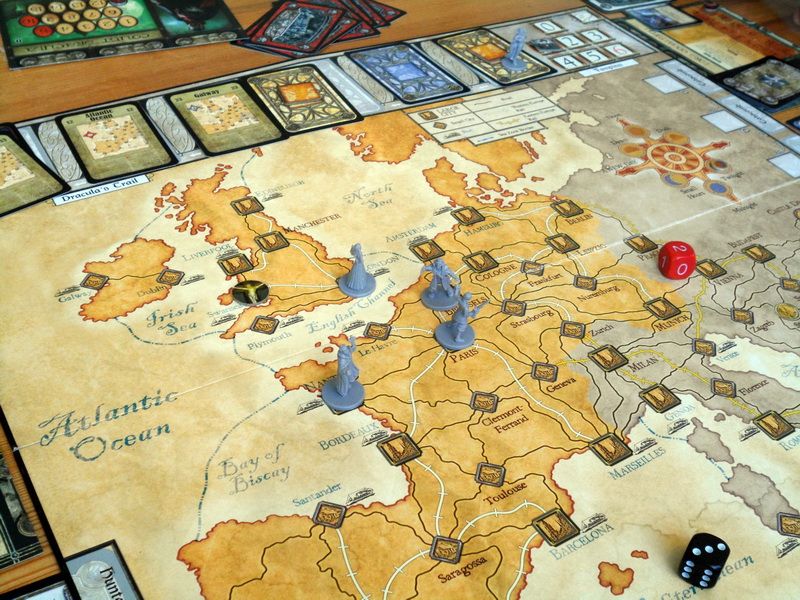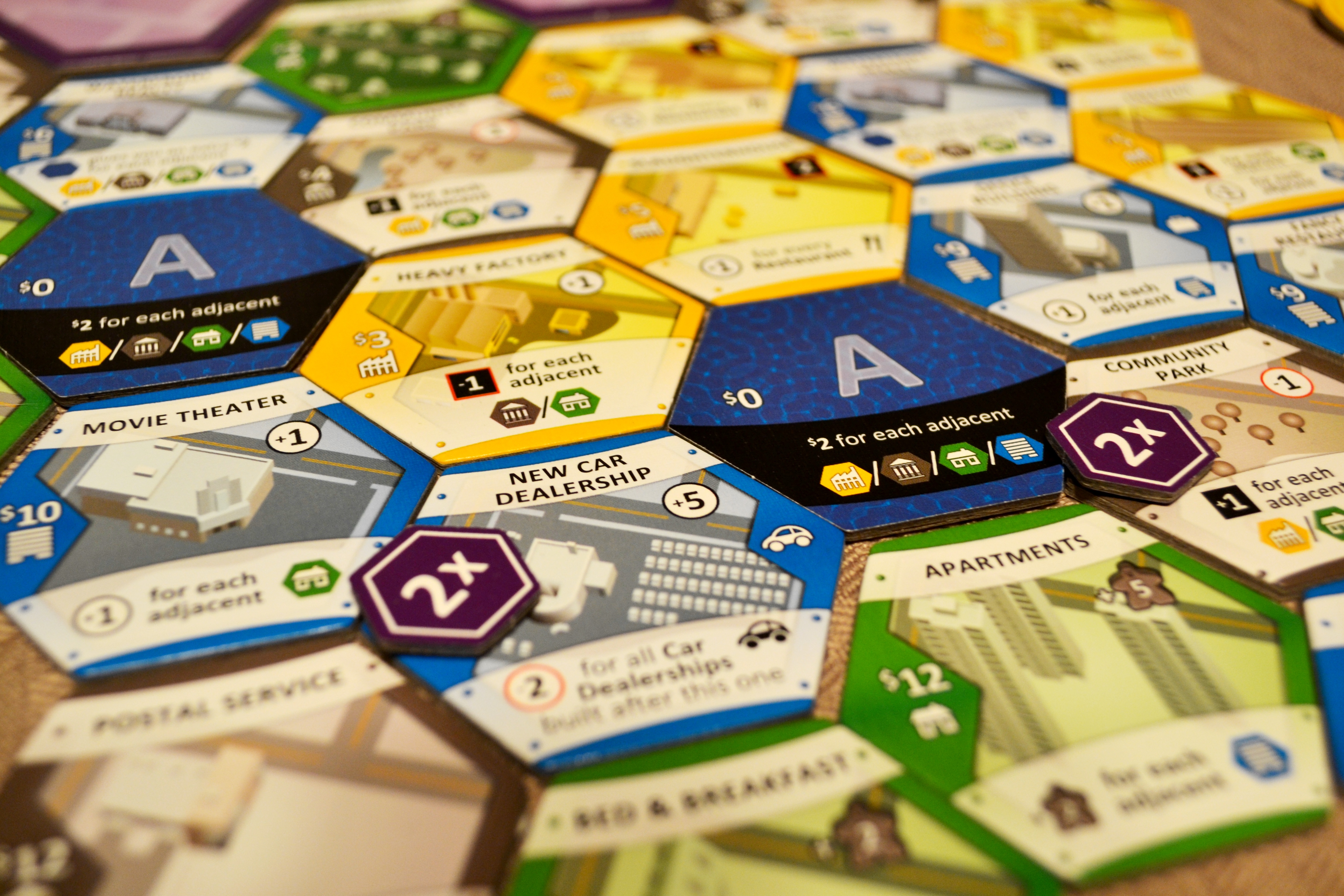Designer: Matt Leacock
The grandfather of modern cooperative gaming, Pandemic is one of the most popular games that has ever been made. You play a member of a team tasked with fighting a world crushing epidemic.
Interesting Mechanic: Epidemics. How epidemics spread is interesting. Every turn, you will flip over a couple of cards to determine which cities will get one disease cube. If a city gets more than three cubes, shit goes sideways fast. However, if a player draws an EPIDEMIC card before this phase, you will draw a card from the bottom of the deck, then shuffle the discard pile – which includes the card you just drew – and put it on TOP of the deck before revealing your epidemic cards. This rule means that the same handful of cities are the ones under constant threat, and players have a good idea of which cities are always at risk and can accomodate accordingly. Understanding the cycling of the Epidemic deck is the key to success in Pandemic.
Pandemic is one of the games that I’ve played the most on this list, but it’s since been surpassed by other coop games – some of which appear on this list. Still, I consider it to be one of the classic gaming essential gateway games that should be in almost any board gaming collection.

(Photo Credit: Board Game Quest)









Recent Comments